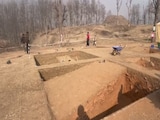Hours after US President Joe Biden released the first high-resolution image captured by the James Webb telescope, space enthusiasts are comparing the new telescope with its predecessor Hubble. Many users have posted side-by-side images captured by both the telescopes to show the difference between them. While the images taken by Webb are sharper, those captured by Hubble appear to lack in details. The first image taken by the Webb telescope shows crystal-clear picture of deep space and was presented in full colour.
The photos comparing James Webb telescope with Hubble show how a different technology used by the former gives stunning results.
American space agency NASA has also created a page giving a detailed comparison between the two telescopes.
"Webb often gets called the replacement for Hubble, but we prefer to call it a successor. Hubble's science pushed us to look to longer wavelengths to "go beyond" what Hubble has already done," NASA said on its page.
"Webb will primarily look at the Universe in the infrared, while Hubble studies it primarily at optical and ultraviolet wavelengths (though it has some infrared capability)," it further said.
Webb's primary imager NIRCam operates in the near infrared wavelength spectrum because light from the early universe has been stretched out by the time it reaches us. It allows even the faintest of galaxies to be brought into focus.
Launched in December 2021 from French Guiana on an Ariane 5 rocket, Webb is orbiting the Sun at a distance of 1.6 million kilometres from Earth, in a region of space called the second Lagrange point.
Here, it remains in a fixed position relative to the Earth and Sun, with minimal fuel required for course corrections.
A wonder of engineering, the total project cost is estimated at $10 billion, making it one of the most expensive scientific platforms ever built, comparable to the Large Hadron Collider at CERN.















